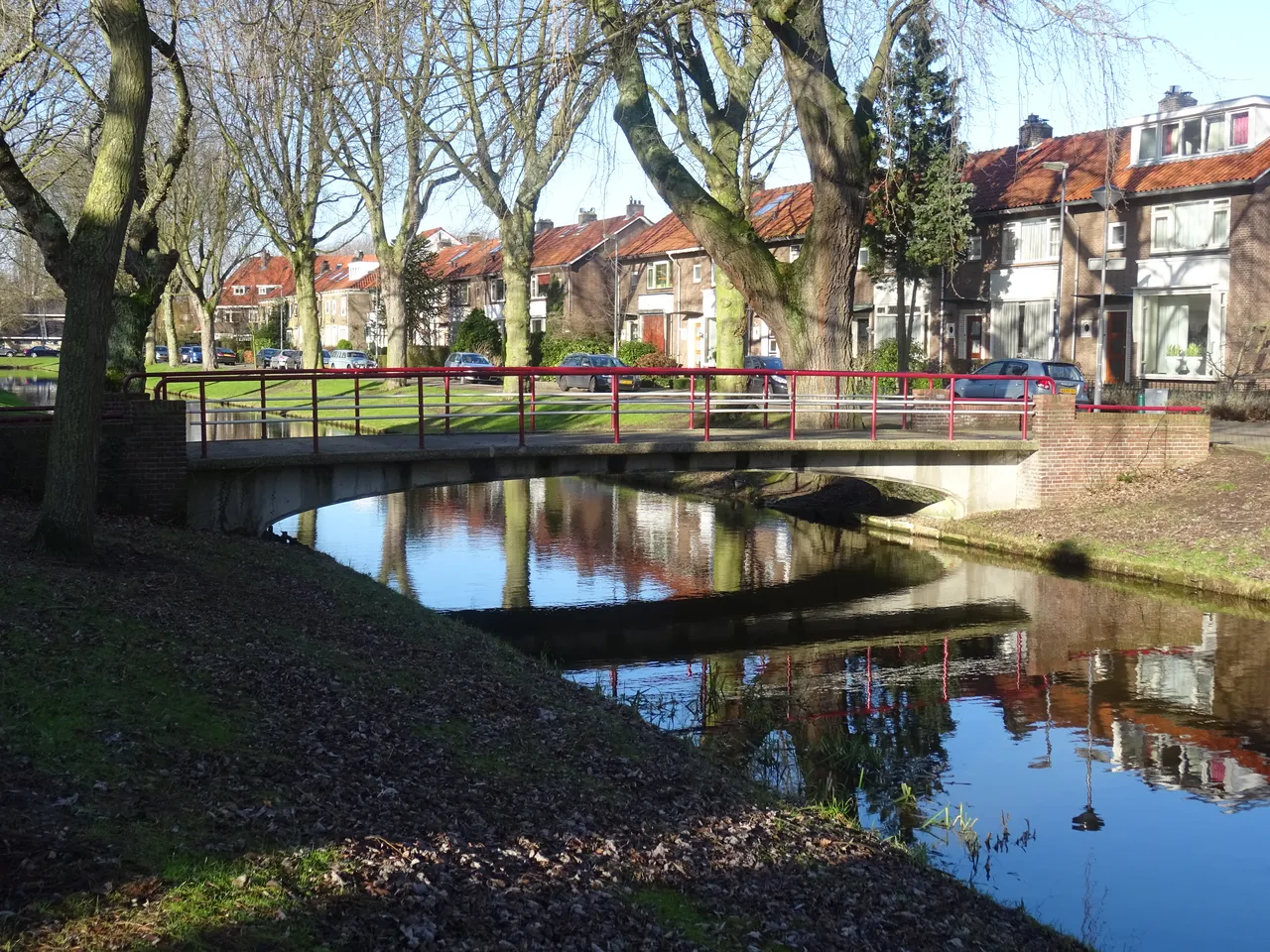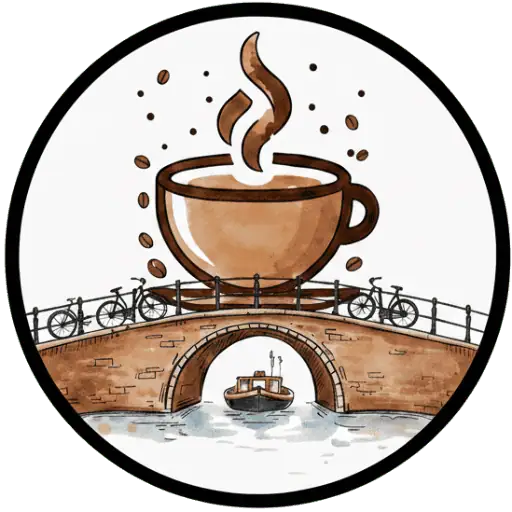Hillegersberg‑Schiebroek pairs village charm with an urban coffee culture. From Senseo to single‑origin espresso, from Rotterzwam to a packaging‑free bean wall, residents and visitors savour quality, sustainability, and barista creativity in every cup. Stroll along Bergse Dorpsstraat and sample flat whites, matcha lattes, and pastries.

Roasters in Hillegersberg‑Schiebroek
No roasters have been found yet.
Coffee Bars in Hillegersberg‑Schiebroek
No coffee bars have been explored yet.
More about Hillegersberg‑Schiebroek
Coffee in Hillegersberg‑Schiebroek: a vibrant tradition
Hillegersberg‑Schiebroek marries village charm with urban flair, and coffee runs like a common thread through daily life. Visitors and locals find filter coffee at a neighborhood bakery, latte art in a trendy bar, and even circular mushrooms grown on coffee grounds. This mix makes the district a fascinating example for enthusiasts of the coffee sector.
Historic roots of the ‘bakkie’
Until 1941 Hillegersberg was an independent village where coffee was mostly drunk at home or in small “coffee houses”. Rotterdam was already a port city and importer, which meant fresh beans were never far away. After the war, filter coffee became the focus; Douwe Egberts simmered in nearly every household. The morning “coffee time” accompanied by a biscuit remains a cherished habit.
Key milestones
- 1920s: Van Nelle factories roast coffee, tea and tobacco in the city.
– 1970s‑1980s: Almost every home owns a drip coffee maker, coffee with cake accompanies every visit.
– 2001: The Senseo machine arrives; within ten years, 7 million are standing in Dutch kitchens.
– 2010s: The third wave reaches Rotterdam; espresso bars spring up in the northern districts as well.
– 1970s‑1980s: Almost every home owns a drip coffee maker, coffee with cake accompanies every visit.
– 2001: The Senseo machine arrives; within ten years, 7 million are standing in Dutch kitchens.
– 2010s: The third wave reaches Rotterdam; espresso bars spring up in the northern districts as well.
From Senseo to specialty
Senseo made coffee quicker and milder, but later earned the label “weak brew”. Younger coffee drinkers sought a deeper flavour profile and switched to espresso. Around 2015 the specialty culture blossomed: single‑origin beans, latte art and alternative milks conquered the menu. Still, the trusty filter pot remains on many countertops, especially in the homes of the older 19 % of residents.
Local hotspots that make the difference
A walk along Bergse Dorpsstraat or Straatweg reveals the diversity. Juffrouw van Zanten serves babyccinos alongside flat whites in a living‑room atmosphere. Marques Espresso pairs 4.7‑star espresso with house‑made ice‑cream. Zespresso fills the gap in Schiebroek with slick barista shots and fresh pastries. Round & Round attracts enthusiasts with matcha and Japanese patisserie, while gelateria‑cafés like Talamini pour espresso next to gelato.
Quick look at crowd favorites
– Juffrouw van Zanten (Freericksplaats): family‑friendly brunch and latte art.
– Marques Espresso (Straatweg 53B): iced coffee in the summer heat, warm service all year round.
– Zespresso (Peppelweg): modern interior, reliable cappuccino.
– Round & Round (110‑Morgen): matcha latte and airy chiffon cake.
– Albert Heijn de Wolf (Kleiweg): Shonora beans from Ethiopia for home baristas.
– Marques Espresso (Straatweg 53B): iced coffee in the summer heat, warm service all year round.
– Zespresso (Peppelweg): modern interior, reliable cappuccino.
– Round & Round (110‑Morgen): matcha latte and airy chiffon cake.
– Albert Heijn de Wolf (Kleiweg): Shonora beans from Ethiopia for home baristas.
Who drinks what?
The neighbourhood has 44‑45 thousand residents with above‑average incomes and an average home value around €489k. Coffee consumption mirrors the national average of 2.4 cups per day. Seniors often swear by filter coffee or Senseo, while thirty‑somethings order cappuccino with oat milk. Both groups share a love of quality and are happy to pay extra for fair‑trade or organic beans.
Preferences at a glance
– Traditional: black or 'koffie verkeerd' from the drip pot.
– Convenience: Senseo pads remain popular with busy families.
– Trend‑driven: flat white, cold brew and seasonal specials.
– Home expert: fully automatic machine or hand grinder for single‑origin espresso.
– Loyalty: saving Douwe Egberts points for free crockery.
– Convenience: Senseo pads remain popular with busy families.
– Trend‑driven: flat white, cold brew and seasonal specials.
– Home expert: fully automatic machine or hand grinder for single‑origin espresso.
– Loyalty: saving Douwe Egberts points for free crockery.
Sustainable thinking in every sip
Circular initiatives give coffee grounds a new lease of life. Rotterzwam transforms up to 7,000 kg of coffee grounds into 1,300 kg of oyster mushrooms every month, which feature on local menus. GroenCollect collects used coffee with electric vans and recovers oils and colorants. At AH XL, residents could fill their own jars at a packaging‑free wall stocked with beans and tea.
Sustainable highlights
- Rotterzwam: coffee grounds become mushrooms, bitterballen and croquettes.
- Caffe Inc.: extracts from waste for cosmetics and textiles.
- Gardeners: coffee grounds as slug‑repellent compost additive.
- Coffee bars: discount for reusable cups.
- Fairtrade Municipality campaign supports farmers and the climate.
- Caffe Inc.: extracts from waste for cosmetics and textiles.
- Gardeners: coffee grounds as slug‑repellent compost additive.
- Coffee bars: discount for reusable cups.
- Fairtrade Municipality campaign supports farmers and the climate.
Looking ahead: flavor and impact continue to grow
Hillegersberg‑Schiebroek shows that tradition and innovation pair perfectly. The older generation keeps enjoying a familiar comforting brew, while younger drinkers explore new brewing methods. Entrepreneurs cater to both worlds with sustainable, flavorful products. This promises a future in which every cup not only tastes better but also benefits people and planet.
